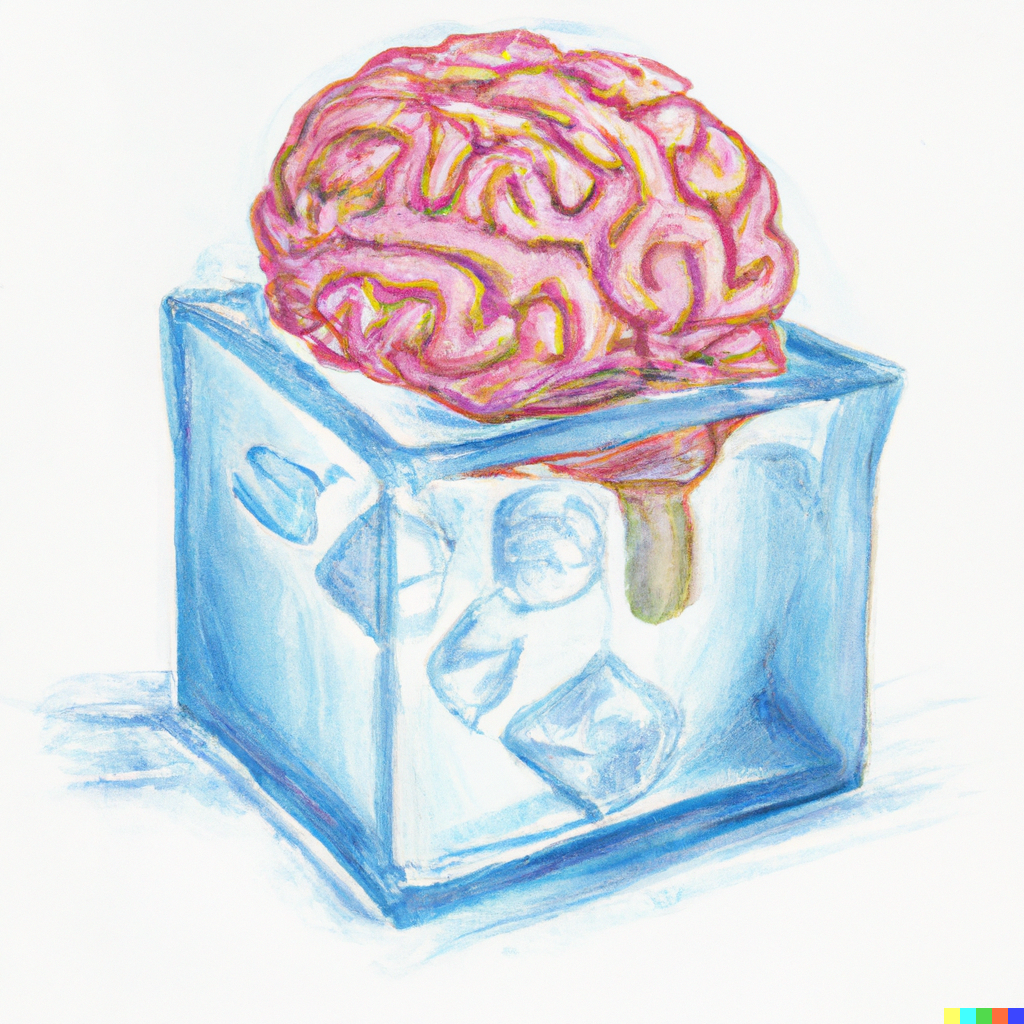
The human brain, the most enigmatic of machines, has escaped the grasps of our understanding for the longest time. Is this the century when we crack its code? And what are the implications of this feat for the day-to-day happenings in the world?
The human brain, the most enigmatic of machines, has escaped the grasps of our understanding for the longest time. Is this the century when we crack its code? And what are the implications of this feat for the day-to-day happenings in the world?


Psychology, the domain broadly understood as ‘the study of the mind’, has had a very nuanced history, from being part of the philosophical domain, to the explosive branching into different sub-disciplines, and finally to its fragile understanding of where it stands along the humanities-to- hard-science spectrum. Nevertheless, a domain that has received massive attention and growth in the last 20 years is neuroscience, the study of the nervous system. This has happened hand in hand with the development of sophisticated imaging techniques, such as functional magnetic resonance imaging (fMRI) and magnetoencephalography (MEG). Despite great support for the study of the mind as a result of the brain, there has also been backlash, with the main critique being that the field brings nothing new to the table and feigns to be closer to the hard sciences due to the allure of the “objective” results of brain imaging (Levitin, 2018). This begs the question: what is the current state of neuroscience as a discipline? Where is it going?
Before delving into the future, we must consider the past and the present. One of the main interests of psychology is “The Hard Problem”, proposed by David Chalmers (1995). The philosophical problem is that people have ignored the fundamental puzzle of how it is that the physical mind brings about subjective experiences. We instead fall prey to the quantitative imperative — that we can only know what we can measure, resulting in research of everything around the Hard Problem but the problem itself. Is neuroscience perhaps the key to solving this fundamental puzzle of existence?
Kagan et al. (2022) seemed to have taken a shot at it. The researchers of this study developed a virtual environment in which neurons were able to interact with one another and learn based on their experiences in said environment. They found that the neurons were able to exhibit complex behaviors, such as learning to avoid certain stimuli and seeking out rewards, suggesting that they have some level of sentience. This was reflected in a procedure where the neurons were responding to stimuli exerted on them by the researchers, and ultimately represented in the neurons ‘controlling’ a paddle in the classic game ‘Pong’.
The study used a variety of techniques, including electrophysiology, calcium imaging, and machine learning algorithms, to monitor and analyze the activity of the neurons in the virtual environment. The researchers found that they exhibited activity patterns that were similar to those observed in living organisms, indicating that they were functioning in a way that was similar to biological neurons. This relates to the Hard Problem, in that it suggests neurons have a level of consciousness that, as studied more rigorously, may unlock an ability to understand experience on a cellular level.
“Neuroscience is very much in its most dynamic stages yet, impervious to judgment and most clearly encompassing the scientific instinct towards truth.”
Despite this impressive attempt, there are some obvious limitations with the fundamental principles applied in this approach. The authors equated delivering specific stimuli to the cellular environment to the neuron ‘learning’ the correct and incorrect movements when playing ‘Pong’, much like the principle of operant conditioning in humans and animals, where a reward results in repetition of behavior that elicited the reward, while a punishment has the opposite effect. The leap of going from such a macro level of understanding consciousness to a cellular level may be an interesting direction to lean into, and certainly aligns with the neuroscientific tenet that all experience is a result of activity in the brain. However, the approach is speculative in nature, lacking an integral, explicit translation that this cellular environment is actually responding to a game of ‘Pong’. How is it that we can make the assertion that conscious experience, something we barely seem to understand on a general level, can come from a cell?
Holistic reviews of the current state of neuroscience support this general view, making the argument that neuroscience may fall prey to its fine-grained imaging approaches, and wholly undermine the integrative nature of the brain and all its components. (Gochman et al., 2020) This issue results in a complex dynamic within neuroscientific literature: while some researchers seek out specific, all-encompassing rules for distinct brain areas, others are still working through the basics, using different techniques to gain deeper insights into brain connectivity and structure as a whole. For example, a team of researchers at the University of Amsterdam have created a 3 dimensional rendition of the human brain, using an impressive technique that allowed them to integrate histology techniques as well as MRI scanning on a post-mortem brain (Alkemade et al., 2022). The procedure entails slicing the post-mortem brain that is fixated and frozen, using staining techniques on these slices to reveal microcellular structural connections, and then ‘splicing’ the brain back into a 3-dimensional format. This approach allows for a new visualization of both the general structure of the brain as seen with an MRI, as well as the microscopic structures shown using histology in real time.
Of course, these two sets of research are wholly incomparable, in that they tackle entirely different questions about the nervous system. More so, this indicates the gradation and the variety with which we can study the brain. This variation can result in a complicated reading for any person who has delved into any set of literature within the field — on top of varied findings, as expected in most scientific literature, there is great variation in employed techniques, fundamental questions as well as interpretations of results. This, in many ways, makes the objective field of neuroscience all the more subjective. On the other hand, one may consider that this array of research, with different core assumptions and areas of interests, makes for proof that neuroscience is very much in its most dynamic stages yet, impervious to judgment and most clearly encompassing the scientific instinct towards truth.
Where does this leave us? Certainly, this back and forth allows for a nuanced conversation between researchers, integrating new findings and techniques into their research methods on a daily basis. At the end of the day, any and all research done with a deep understanding of its strengths and drawbacks, sound in its logical reasoning and statistical interpretation, is of great use to the scientific community; it builds a foundation for conversation and falsification. In that sense, the argument that neuroscience at a standstill may be turned null — we are only just beginning.
References
-
Alkemade, A., Bazin, P., Balesar, R., Pine, K., Kirilina, E., Möller, H. E., Trampel, R., Kros, J. M., Keuken, M. C., Bleys, R. L. a. W., Swaab, D. F., Herrler, A., Weiskopf, N., & Forstmann, B. U. (2022). A unified 3D map of microscopic architecture and MRI of the human brain. Science Advances, 8(17). https://doi.org/10.1126/sciadv.abj7892,
-
Baumol, W. (2004). Education for innovation: Entrepreneurial breakthroughs vs. corporate incremental improvements. Journal of Business Venturing, 19(2), 249-258. https://doi.org/10.1016/S0883-9026(03)00031-5
-
Chalmers, D. (1995). Facing up to the problem of consciousness. Journal of Consciousness Studies, 2(3), 200-219,
-
Kagan, B. J., Kitchen, A. C., Tran, N. T., Habibollahi, F., Khajehnejad, M., Parker, B. J., Bhat, A., Rollo, B., Razi, A., & Friston, K. J. (2022). In vitro neurons learn and exhibit sentience when embodied in a simulated game-world. Neuron, 110(23), 3952-3969.e8. https://doi.org/10.1016/j.neuron.2022.09.001,
-
Levitin, D. J. (2018, March 22). Why the modern world is bad for your brain. The Guardian. https://www.theguardian.com/science/2015/jan/18/modern-world-bad-for-brain-daniel-j-levitin-organized-mind-information-overload .
Psychology, the domain broadly understood as ‘the study of the mind’, has had a very nuanced history, from being part of the philosophical domain, to the explosive branching into different sub-disciplines, and finally to its fragile understanding of where it stands along the humanities-to- hard-science spectrum. Nevertheless, a domain that has received massive attention and growth in the last 20 years is neuroscience, the study of the nervous system. This has happened hand in hand with the development of sophisticated imaging techniques, such as functional magnetic resonance imaging (fMRI) and magnetoencephalography (MEG). Despite great support for the study of the mind as a result of the brain, there has also been backlash, with the main critique being that the field brings nothing new to the table and feigns to be closer to the hard sciences due to the allure of the “objective” results of brain imaging (Levitin, 2018). This begs the question: what is the current state of neuroscience as a discipline? Where is it going?
Before delving into the future, we must consider the past and the present. One of the main interests of psychology is “The Hard Problem”, proposed by David Chalmers (1995). The philosophical problem is that people have ignored the fundamental puzzle of how it is that the physical mind brings about subjective experiences. We instead fall prey to the quantitative imperative — that we can only know what we can measure, resulting in research of everything around the Hard Problem but the problem itself. Is neuroscience perhaps the key to solving this fundamental puzzle of existence?
Kagan et al. (2022) seemed to have taken a shot at it. The researchers of this study developed a virtual environment in which neurons were able to interact with one another and learn based on their experiences in said environment. They found that the neurons were able to exhibit complex behaviors, such as learning to avoid certain stimuli and seeking out rewards, suggesting that they have some level of sentience. This was reflected in a procedure where the neurons were responding to stimuli exerted on them by the researchers, and ultimately represented in the neurons ‘controlling’ a paddle in the classic game ‘Pong’.
The study used a variety of techniques, including electrophysiology, calcium imaging, and machine learning algorithms, to monitor and analyze the activity of the neurons in the virtual environment. The researchers found that they exhibited activity patterns that were similar to those observed in living organisms, indicating that they were functioning in a way that was similar to biological neurons. This relates to the Hard Problem, in that it suggests neurons have a level of consciousness that, as studied more rigorously, may unlock an ability to understand experience on a cellular level.
“Neuroscience is very much in its most dynamic stages yet, impervious to judgment and most clearly encompassing the scientific instinct towards truth.”
Despite this impressive attempt, there are some obvious limitations with the fundamental principles applied in this approach. The authors equated delivering specific stimuli to the cellular environment to the neuron ‘learning’ the correct and incorrect movements when playing ‘Pong’, much like the principle of operant conditioning in humans and animals, where a reward results in repetition of behavior that elicited the reward, while a punishment has the opposite effect. The leap of going from such a macro level of understanding consciousness to a cellular level may be an interesting direction to lean into, and certainly aligns with the neuroscientific tenet that all experience is a result of activity in the brain. However, the approach is speculative in nature, lacking an integral, explicit translation that this cellular environment is actually responding to a game of ‘Pong’. How is it that we can make the assertion that conscious experience, something we barely seem to understand on a general level, can come from a cell?
Holistic reviews of the current state of neuroscience support this general view, making the argument that neuroscience may fall prey to its fine-grained imaging approaches, and wholly undermine the integrative nature of the brain and all its components. (Gochman et al., 2020) This issue results in a complex dynamic within neuroscientific literature: while some researchers seek out specific, all-encompassing rules for distinct brain areas, others are still working through the basics, using different techniques to gain deeper insights into brain connectivity and structure as a whole. For example, a team of researchers at the University of Amsterdam have created a 3 dimensional rendition of the human brain, using an impressive technique that allowed them to integrate histology techniques as well as MRI scanning on a post-mortem brain (Alkemade et al., 2022). The procedure entails slicing the post-mortem brain that is fixated and frozen, using staining techniques on these slices to reveal microcellular structural connections, and then ‘splicing’ the brain back into a 3-dimensional format. This approach allows for a new visualization of both the general structure of the brain as seen with an MRI, as well as the microscopic structures shown using histology in real time.
Of course, these two sets of research are wholly incomparable, in that they tackle entirely different questions about the nervous system. More so, this indicates the gradation and the variety with which we can study the brain. This variation can result in a complicated reading for any person who has delved into any set of literature within the field — on top of varied findings, as expected in most scientific literature, there is great variation in employed techniques, fundamental questions as well as interpretations of results. This, in many ways, makes the objective field of neuroscience all the more subjective. On the other hand, one may consider that this array of research, with different core assumptions and areas of interests, makes for proof that neuroscience is very much in its most dynamic stages yet, impervious to judgment and most clearly encompassing the scientific instinct towards truth.
Where does this leave us? Certainly, this back and forth allows for a nuanced conversation between researchers, integrating new findings and techniques into their research methods on a daily basis. At the end of the day, any and all research done with a deep understanding of its strengths and drawbacks, sound in its logical reasoning and statistical interpretation, is of great use to the scientific community; it builds a foundation for conversation and falsification. In that sense, the argument that neuroscience at a standstill may be turned null — we are only just beginning.
References
-
Alkemade, A., Bazin, P., Balesar, R., Pine, K., Kirilina, E., Möller, H. E., Trampel, R., Kros, J. M., Keuken, M. C., Bleys, R. L. a. W., Swaab, D. F., Herrler, A., Weiskopf, N., & Forstmann, B. U. (2022). A unified 3D map of microscopic architecture and MRI of the human brain. Science Advances, 8(17). https://doi.org/10.1126/sciadv.abj7892,
-
Baumol, W. (2004). Education for innovation: Entrepreneurial breakthroughs vs. corporate incremental improvements. Journal of Business Venturing, 19(2), 249-258. https://doi.org/10.1016/S0883-9026(03)00031-5
-
Chalmers, D. (1995). Facing up to the problem of consciousness. Journal of Consciousness Studies, 2(3), 200-219,
-
Kagan, B. J., Kitchen, A. C., Tran, N. T., Habibollahi, F., Khajehnejad, M., Parker, B. J., Bhat, A., Rollo, B., Razi, A., & Friston, K. J. (2022). In vitro neurons learn and exhibit sentience when embodied in a simulated game-world. Neuron, 110(23), 3952-3969.e8. https://doi.org/10.1016/j.neuron.2022.09.001,
-
Levitin, D. J. (2018, March 22). Why the modern world is bad for your brain. The Guardian. https://www.theguardian.com/science/2015/jan/18/modern-world-bad-for-brain-daniel-j-levitin-organized-mind-information-overload .


